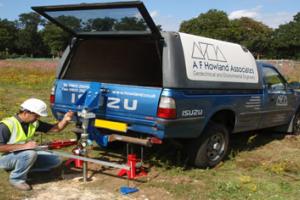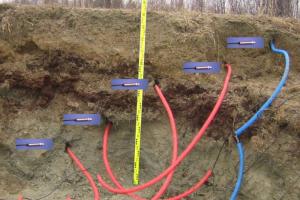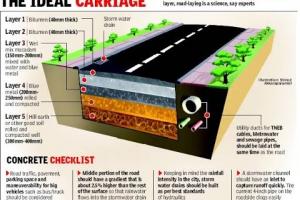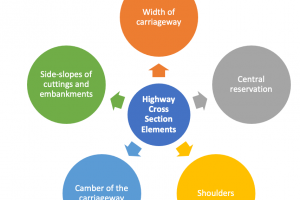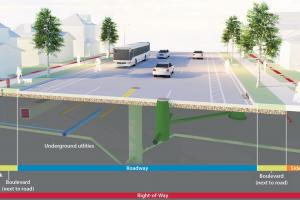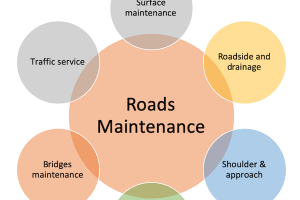Types of Base Course - Granular, Base, Macadam, Water Bound
Granular Base Course:
A mixture of soil particles ranging in size from coarse to fine. Processing involve crushing oversized particles and screening where it is necessary to secure the desired grading. The requirements of a satisfactory soil aggregate surface are:
- Stability
- Resistance to abrasion
- Resistance to penetration of water
- Capillary properties to replace moisture lost by surface evaporation upon the addition of wearing course requirement change.
Macadam Base:
Macadam base is a type of road base construction that was widely used in the past but has been largely replaced by more modern techniques. It consists of multiple layers of compacted crushed stone or gravel. The base is constructed by placing coarse aggregate, such as crushed stone, on the prepared subgrade and compacting it with heavy rollers. The process is repeated with finer aggregates until the desired thickness and compaction level are achieved.
The macadam base provides stability and support to the pavement structure by distributing the load from traffic and preventing deformation of the underlying subgrade. It also offers some drainage capabilities due to the void spaces between the stones. However, it lacks the superior performance and durability of more advanced base course materials and methods.
In-water bound Macadam:
In-water bound macadam, also known as water-bound macadam or WBM, is a type of road construction method that utilizes a mixture of crushed stone aggregates, water, and a binding material, typically clay or fine sand. This technique was widely used in the past, particularly in rural areas with limited resources and low traffic volumes.
The construction process involves placing the crushed stone aggregates in layers on the prepared subgrade. Each layer is compacted and then thoroughly watered to facilitate the binding action of the finer particles. The water helps in the compaction process and allows the binding material to fill the voids between the larger stones, creating a relatively stable and durable base.
In-water bound macadam provides some load-bearing capacity and allows for water drainage. However, it is not as strong or long-lasting as modern base course materials and methods. Therefore, it is typically used in low-traffic areas or as a temporary solution before more permanent pavement structures are implemented.
Treated Bases:
Treated bases, also known as stabilized bases, are base course materials that have been modified or treated with additives to improve their engineering properties and performance. These additives can include cement, lime, asphalt, or chemical stabilizers.
The treatment process involves mixing the additives with the base material, such as crushed stone or aggregate, and then compacting the mixture to achieve the desired strength and stability. The additives help bind the particles together, increasing the load-bearing capacity, reducing deformation, and enhancing durability.
Treated bases offer several advantages, including increased strength, improved resistance to moisture, and reduced susceptibility to frost heave and other environmental factors. They are commonly used in high-traffic areas, heavy-duty pavements, and areas with challenging soil conditions where additional support and stability are required.



